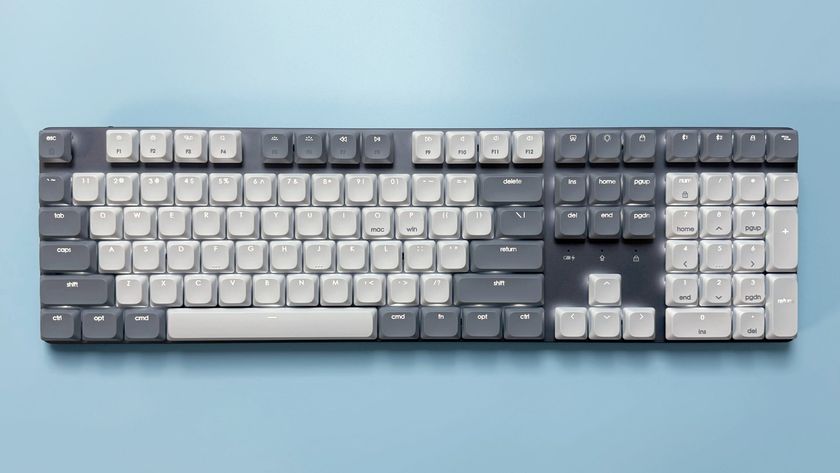Does Kinect herald the demise of the keyboard?
Kinect for Windows would give us a new way to control our PCs
The problem with trying to replace the keyboard and mouse combination is that clever new peripherals that may actually be better often have too steep a learning curve or are simply impracticable to use.
Russel Beale is a Senior Lecturer in HCI and leads the Advanced Interaction Lab at the University of Birmingham. He co-authored one of the seminal textbooks on HCI, called simply Human Computer Interaction.
"Where you're using movement and facial recognition to control what's happening in the game. It's a much more natural experience and a really involving one," he says. "But these these have to be appropriate. You wouldn't want to compose a letter in a word processor by scowling, grimacing and jumping around the room. It's horses for courses, there's a time and a place for a keyboard and mouse and typing stuff and a time and a place for waving imaginary lightsabers around a room."
At the same time, if the iPhone and iPad have any lessons for interface designers, it's that people don't mind sacrificing capabilities for ease of use. "When people's experiences are intuitive and natural," Beale continues, "Then they'll put a bit of effort in to learn how to get the most out of [the device]. Desktop computers are the other way round, you have to put a lot of effort in to discover how powerful they really are."
Perhaps the most surprising thing about the PC is how slowly multi-touch screens have taken off. There are a few laptops and displays available but other than French RTS RUSE, not many applications to use them with.

R.U.S.E: R.U.S.E. supports multi-touch interfaces, but also works just fine with a mouse and keyboard
"I don't think multi-touch has come of age yet," Beale says, "Yes, you can use two fingers to scroll or zoom and shrink things on a screen, but if you look at devices, such as Microsoft's Surface, they don't actually do that much more than other devices."
Get daily insight, inspiration and deals in your inbox
Sign up for breaking news, reviews, opinion, top tech deals, and more.
Touching base
There are two problems which haven't been comfortably conquered with desktop touchscreens yet. Hands obscuring the view is a common complaint with iPhone gaming which carries over, and reaching out to a screen in front of you is uncomfortable after just a few seconds.
"Sometimes there are great ideas that wait for the technology to catch up, and other times there are cool technologies that wait for the ideas."
He continues: "I think multi-touch will come much more of age in gaming spaces and so on when you decouple the device from the computer a bit further and allow people to have a much more expressive way of interacting with the systems that they want to. In gaming, it's all about getting people drawn into the game and living the experience. Anything that you put in the way which makes it hard to use is going to be a barrier to that experience."
Beale points out though that you can often use the drawbacks of a system to your advantage. "If you're designing a public information system in a busy place, you put it vertically because you don't want one person to stand in front of it for half an hour."
Beyond motion sensing
Predicting the future is a dangerous occupation, but it's safe to say that the PC keyboard and mouse combo is going to be with us for some time yet.
Just in case you've picked up the idea that the future isn't going to be quite as exciting as you thought, though, I asked Professor Hudson if Kinect's controllerless motion sensing could possibly be topped by anything else.
"There are many, many things beyond full-body sensing," he says. "As a researcher I tend to think of them in terms of questions that I want to answer. Just a few of the interesting ones might be: Can we interact directly with the brain? Can we make a cell phone that understands enough about its surroundings and what its owner is doing to not ring during a meeting or at the movie theatre?
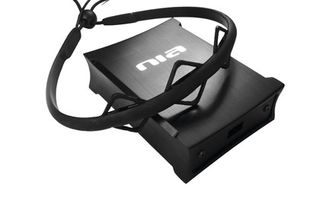
OCZ NIA: Thought control on the PC is nothing new, but how many people actually bought OCZ's NIA?
"Given that every second looking away from the road puts us in danger, how can we create interfaces that work well in the car? Devices are getting smaller and smaller, but our fingers are not. How can we effectively interact with really small mobile devices? Are there ways to make interfaces that can automatically sense motor control difficulties like tremor or spasticity and compensate for it? Can we make input devices that move, change form, or otherwise allow us to make use of our sense of touch during interaction? These are all things I've worked on at least a little in the last few years."
Maybe it's worth chasing that job in HCI after all.
10 crazy controllers
New ways to interact with your PC may be few and far between today, but that's because of the explosion of failed designs that's happened in the past. Here's 10 of our favourites that never quite captured the public imagination.
1. Spacetech Orb 360
Like the Dual Strike, only less cumbersome in its foolishness, the ball on the left was supposed to be more accurate than a mouse for FPS games. Right…
2. PCGamerBike
This dislikes fat gamers. Pedals replace forward and back game controls, keeping you fit while you play. Unless you're playing Starcraft II that is.
3. AlphaGrip AG-5
Nothing comes close to the AlphaGrip AG-5 in terms of buttons. It had 42 in an array of D-pad like layouts, most of which were on the base.
4. Zalman FPSGun
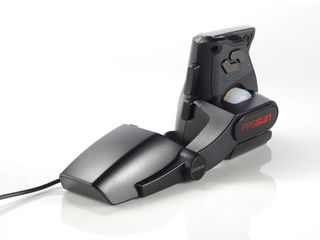
A very accurate peripheral for FPSes that looks like a gun. Or it would be, if you could turn your brain on its side to transpose lateral hand movement to the vertical plane.
5. Sidewinder Dual Strike
So nearly the Wii wand of its day, but it failed design test #1: Don't make life harder for users. The ball-socketed left handle controlled the camera in shooters.
6. Novint Falcon
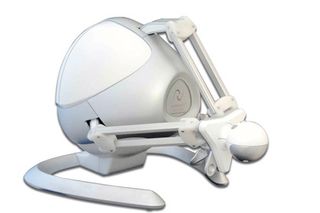
I played with a Novint Falcon on a stand at CES 2006. And I quite liked it. Based on a surgical robot controller it had promise, but it just didn't catch on.
7. Strategic Commander
Microsoft has made some of the best controllers for PC gaming – and some of the worst. This mouse didn't move, making precision controlling nigh on impossible.
8. Sandio Game O'
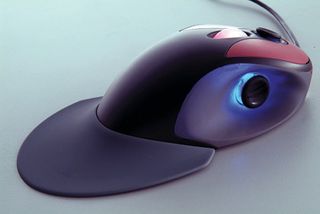
Proof that too much of a good thing is too much: adding D-pads and rockers to give three dimensional cursor control just proved too confusing when in game.
9. The Claw
In fairness, we could have picked any of the many attempts to create a small left-handed keyboard with a pared down set of buttons from Belkin's Nostromo to Saitek's GM2.
10. Logitech Cyberman
You don't make the mouse better by fixing it in place - it just doesn't work. This, however, didn't stop Logitech from trying with this awful, flawed controller.

